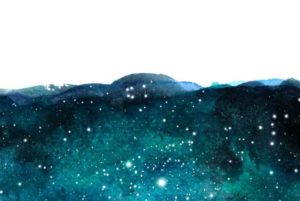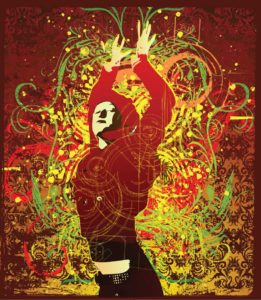There are moments in your life, as a woman, a wife, a mother and a human being, that one is desperate to get away. Desperate to savor a few moments, hours, or even days in the company of one’s sole, soul, self. Desperate for the silence of solitude and the self-indulgence of letting daily obligation fall away. Far, far, away. This desire arises not out of the ill-conceived notion of selfishness, nor out of a crisis of identity, but rather from the primal reflex of self-preservation. For in the web of our day-to-day construction of life, we threaten to suffocate ourselves and are faced with the surreal dilemma of drinking our own blood for survival. Modern woman too often looks in the mirror and observes her reflection morph into some arachnid vampire character from a horror movie. This may seem a little melodramatic, but safe to say that a few weeks ago, on the cusp of the Solstice and Solar eclipse, I found myself on the threshold of the casting for such a movie in my imagination. As much as a small part of old me wishes I might have landed a role in a Hollywood mini-buster many moons ago, my present self wishes nothing to do with the big screen, and I turned my back on the proposed role and booked myself a weekend away instead.
As summer was clawing it’s way up my spine, I felt dry and itchy and exhausted from a month of torture by the tentacles of cottonwood pollen. I was aching for water, and envisioned sitting with my feet in a stream from sunup to sundown. I pulled my dusty old magic bottle down from the shelf, gave it a rub, and with a flash and a whoosh, found myself in a little apartment next to the Fraser River in Winter Park. The two hour drive had pretty much unfolded in the blink of an eye, and the awesome lightning and thunder storm and unprecedented deluge of rain was taken as a good omen for my near three day separation from my family. Inhale. Space. Exhale. Space. A distinct absence of humans and dogs related to myself occupied the space between my feet and the crystal clear, rushing, gushing, most enthusiastic and ever so slightly frigid water of the river. After hours of blissful submersion on Friday evening and all day on Saturday, I awoke on Sunday with some new allergy symptoms – my usual sneezing, which had abated as I climbed to higher altitudes, was replaced with a streaming nose. One which almost made me want to plug the offending nostril with a wad of tissue, except that, in the time of Covid-19, it is best not to draw attention to the fact that one may be experiencing any manner of respiratory symptoms at all. I dabbed discreetly at my nose as I plunged my feet back into the river on Sunday morning. I longed for the warm ocean, and somehow, knowing that this water, which was streaming past my feet, was stealing my vital heat and delivering it somewhere closer to the place for which which my heart yearned, comforted me. Dab. Stream. Dab. Stream. This was odd. I felt like I had a cold!
The voice of my ever vigilant mother wafted into my head, delivering a message which every child who grew up with a Caribbean parent knows by heart, “Come in here and get your feet warm before you catch a cold!”. This advice was given whether you were walking outside barefoot at night, on dry cool earth, on grass damp with morning dew, or in the depths of puddles remaining after a rainy season blessing from the sky. Regardless of the fact that temperatures in Barbados seldom dropped below seventy degrees Fahrenheit, my mother new that ‘hot’ and ‘cold’ were relative, and that a cooling of the feet was likely to result in a tipping of the delicate homeostasis of her children, which might then result in sleepless nights for her. So, ‘warm feet’ were a prerequisite for health, and decades later and thousands of miles away, I was still susceptible to her programming! I had a cold! Into the depths of my Mary Poppins handbag which, solo weekend or not, still tagged me as a maternal animal, I dove, and resurfaced with my little zip-lock bag of homeopathic remedies. Aconite. I needed Aconite. Even though my nose had been streaming for over twenty four hours, it was not too late to pull the deep purple Monkshood over my neck and skull and invite healing from this inflammatory process. Normally, and were I at home, I would have started popping the very handy Narayani Cold Mixture combination remedy, but I was confident that I could get straight to the root of this problem by addressing the etiology of my symptoms.
Rhus Toxicodendron is made from the fresh leaves of the Poison Oak plant, gathered at sunset, just before flowering time. It is a remedy which I carry around in my handbag first aid kit in case a soft tissue sprain or strain befalls any of the rather active members of my family. Please beware not to pigeon-hole dear Poison Oak – there are almost nine pages dedicated to it in Murphy’s Repertory, so it certainly possess a healing scope way beyond that of sprains and strains! There are plenty of remedies in the Homeopathic Repertory which present a symptom picture like that of the common cold, but Rhus tox is not the first one we think of. Cold remedy combinations normally consist of the likes of Aconite, Allium cepa, Belladonna, Arsenicum, Natrum muriaticum and Sabadilla. The Rhus tox nose may express violent aching of the bones; a nose bleed which relives a fever; loss of smell; a sore, ulcerated tip dripping water, or sneezing with fluent coryza; but though these last two ‘fit’ my state on the banks of the Fraser, it was the etiology which drew my attention. Someone in need of Rhus tox, regardless of the symptoms they are expressing, may be able to trace the onset of their symptoms to getting cold; having one part of the body get cold; getting wet, getting wet when heated, getting wet feet; or lying on damp ground. Allen’s Keynotes, which is a handy little book for the beginner Homeopath to get a handle on the general symptom picture of more than enough remedies for your at home practice, describes a Rhus tox picture as possibly arising from “too much summer bathing in lake or river”. And so Rhus tox, along with Aconite, came to my rescue, and gently put an end to my Fraser River runny nose.
I hope this little anecdote memorably illustrates the Homeopathic story of susceptibility and etiology. Good luck on your Homeo-journey, and enjoy the few months of summer river bathing we have left in Boulder! May the waters be with you.





